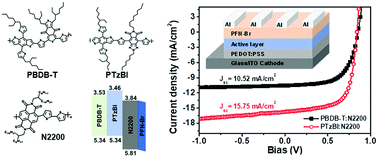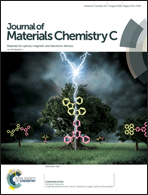On the understanding of energetic disorder, charge recombination and voltage losses in all-polymer solar cells†
Abstract
All polymer solar cells (all-PSCs), compared to fullerene or non-fullerene small molecule based solar cells possess the merits of high morphological stability, good film forming properties and superior mechanical flexibility. However, in contrast to the rapid progress in molecule-design and device engineering in this field, our fundamental insights into key photo-physical parameters that govern the device characteristics still lag behind. Here, based on state of the art PTzBI:N2200 all-PSCs with efficiencies of ∼9% compared with PBDB-T:N2200 all-PSCs, we investigate properties of charge transport, bimolecular recombination, energetic disorder and voltage losses. We show that expedited charge extraction with weaker bias-dependence in the PTzBI:N2200 cell results in the reduction of bimolecular recombination, which explains the increases in photocurrent and fill factor. Further mitigation of the voltage losses in this high performance all-polymer system may be allowed by decreasing the energetic disorder in PTzBI:N2200 bulk heterojunctions through delicate morphological optimization.

- This article is part of the themed collection: Editor’s Choice: Organic Photovoltaics


 Please wait while we load your content...
Please wait while we load your content...